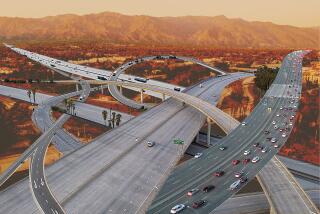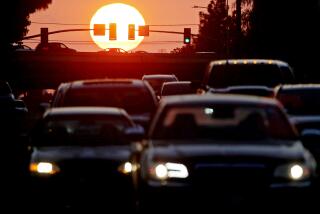Old Commuter News?
- Share via
Prof. Kenneth T. Jackson of Columbia University is at least 30 years late with his pronouncement (March 8) that Southern California is not unusual anymore. My marketing research professor at UCLA Extension taught me that back in 1957.
What he did that Prof. Jackson did not do was convert travel distance to travel time: approximately 25 m.p.h. for surface streets and 50 m.p.h. for freeways. It is the time driving that modifies human behavior--not the distance traveled.
Accordingly, 10 miles equals 24 minutes, 9.2 miles equals 22 minutes, but driving time to work is generally accepted to be 20 minutes--on surface streets, not including parking and walking.
Freeways can add about two to nine miles to the distance traveled to work without changing the time traveled. As the average speeds on the freeways and surface streets have decreased over the past 30 years, people have moved closer to work or changed jobs.
Eighty percent of the population driving to work travels 20 minutes or less. The other 20% travel from 21 minutes to one, to three, or more hours. The 80%/20% factor and the driving times (distances) are observed, unconscious behavior patterns of the population, and therefore, subject to scientific verification.
Many studies on driving times (distances) traveled have been done in Southern California, and all of them are verifications of the consistency of driving behavior. Prof. Jackson should have observed the driving patterns of his fellow New Yorkers. He would have found them very much like those in Southern California. This is the stuff scientific market research is made of--observing what people do.
KENNETH P. JEWETT
Marina del Rey
More to Read
Sign up for Essential California
The most important California stories and recommendations in your inbox every morning.
You may occasionally receive promotional content from the Los Angeles Times.










